Louise de La Vallière, Duchesse de La Vallière et de Vaujours
Françoise-Louise de La Baume Le Blanc was born on August 6 in 1644 to Françoise Le Provost and the officer Laurent de La Baume Le Blanc.

Her father Laurent de La Baume Le Blanc was a member of the poorer branch of the House of La Baume and Seigneur de la Vallière as well as Govenour of the château d’Amboise. Her mother Françoise Le Provost the widow of Pierre-Bernard de Bezay, an adviser of the parlement de Paris. The couple already had a son, born in 1642, named Charles.
Françoise-Louise was called by her second name Louise shortly after her birth and grew up at the Hôtel de la Crouzille in Tours and the and the château de La Vallière in Reugny. Her childhood was marked by a strict Catholic education, during which she received lessons by her aunts Élisabeth and Charlotte, both nuns of the Ordre de Sainte-Ursule, and the early death of her father. Laurent de La Baume Le Blanc died in 1651, as Louise was only seven years old. After their father’s death, Charles and Louise were abandoned by their mother, whose goal it now was to acquire a new husband in order to support herself and her children. Louise and her mother were never too close and became even less so as she married for the third time in 1655. Louise’s new step-father was Jacques de Courtavel, Marquis de Saint Rémy, who served as majordomo for Gaston de France, the brother of Louis XIII.
Louise got along well with the Marquis de Saint Rémy and his position within the household of the Duc d’Orléans allowed her to move to Blois, Gaston’s residence, with him. She spent the rest of her childhood there, in company of Gaston’s daughters, from his second marriage to Marguerite de Lorraine, Marguerite-Louise, Françoise-Madeleine and Élisabeth-Marguerite. Louise and the oldest of the Princesses, the future Grand Duchess of Tuscany, were almost of the same age and soon became friends and confidants. At Blois, Louise learned all that was deemed necessary for a daughter of a good house, to dance, to sing, to write, to ride, the etiquette of the court. The Abbé de Rancé educated the Princesses and Louise in matters of art, music and literature.
Louise’s happy years at Blois came to a sudden end with the death of Gaston de France on February 2 in 1660. With his death most of his property and his title of Duc d’Orléans went to Philippe de France, the brother of Louis XIV, and Gaston’s widow and children moved from the idyllic Blois to the Palais de Luxembourg in Paris. Louise was sixteen as her mother and step-father joined the Dowager-Duchesse and the Princesses in Paris. The Abbé de Choisy, a friend of Louise, describes her during those early days in Paris as a shy, modest and prudent girl of no particular beauty, but an exquisite complexion, blond hair, blue eyes and sweet smile, that spends most of her time with reading to educate herself. A great rider with a very good aim and skilled in handling a pistol, which limped a little when walking due to an injury of the foot. One of her legs was shorter than the other, so Louise wore specially made shoes.
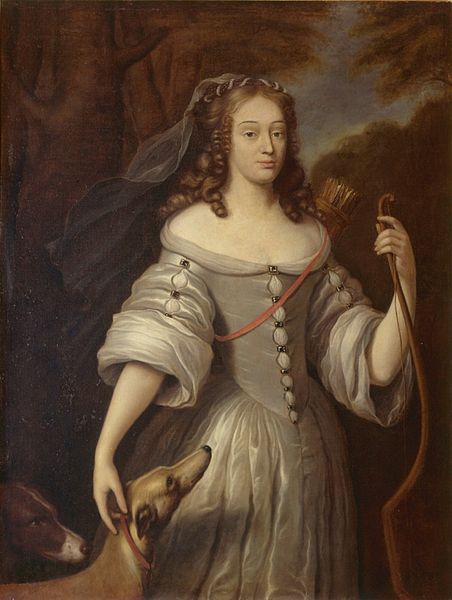
It was due to the influence of a distant relative, Madame de Choisy, that Louise became a member of the household of Henriette d’Angleterre shortly after her marriage to Philippe de France. Louise and Minette were of the same age, but as different as day and night. While Louise was modest and shy, plain even, the new Madame quickly became friendly with her brother-in-law Louis XIV. It is hard to say how far this friendship went, but fact is that is was enough to turn Monsieur from a doting husband into a jealous one and make Anne d’Autriche reprimand her kingly son. Whatever it was that was going on, it became the talk of the whole court. Every visit Louis payed Minette, and those were many, was watched and gossiped about. Every exchanged glance was judged. Every exchanged word checked for secret meanings. Affair or not, this matter would change Louise’s life forever.
As rumours spread that the first-born child of Madame and Monsieur might actually be fathered by the King, a distraction was needed. It appeared to Madame and her friend the Comtesse de Soissons that plain Louise was perfect for the job. She was too much province to pose any danger to steal the King’s affections in their eyes. It was suggested that Louis should pretend to court one of Minette’s ladies-in-waiting to explain why he did visit Madame so often. As distractions should serve either Mademoiselle La Vallière, Mademoiselle de Pons or Mademoiselle de Chimerault. Louis went, as planned, with Mademoiselle La Vallière. Mademoiselle de Pons would find her way into the King’s bed later on by herself.
Louise was only a mere two months in Fontainebleau, the chosen residence at the time, before she became the lover of the Sun King. Much to the displeasure of Madame and the Comtesse, their plan failed and ended in a disaster for them. Louise had no clue of the whole matter, as the King, six years older than herself, suddenly started to turn his attentions to her. In first these attentions were only pretended, as planned, but the more time Louis spent with Louise, the more he got to like the shy and modest girl. She was so very different to all the other ladies at court and reminded him of his first big love Marie Mancini.
For Louise it was the very first time that she was in such a situation and she fell head over heels for the gallant Louis. Every glance made her heart beat faster and every word just made her fall in love more. This simple girl, that did not care for his crown, but only for Louis the person, enchanted the King and soon Minette was forgotten… or rather Minette became his alibi for Louise. At the start Louis pretended to visit Louise in order to see Minette, now Louis pretended to visit Minette in order to see Louise.

Louise was quite overwhelmed by the whole situation, which made Louis’ affections only stronger. She did not quite know what to do, apart from blushing, as Louis sought her company more and more. It put her in quite the trouble with her own conscience. She loved Louis and every second she got to spent with him made her happy beyond measure, yet she was very aware that her Louis was a married man.
Louis made her forget about it, at least for a while, and while the court still believes the Sun King courts the wife of his brother, Louise is the one in the King’s heart. At first both succeeded in keeping it a secret, but Louis soon gave himself away. He just could not stop to ogle his innocent Louise. At the point as Louis won a diamond bracelet at a lottery arranged by his mother and handed it to Louise, it was plain to see for everyone. Louise was quite embarrassed by the gift and handed it back, but Louis insisted she should keep it. Her hands are too pretty not to keep it, he said. A scandal. Louise in turn made him a gift of a fur coat, she bought from her earnings as lady-in-waiting.
Madame and the Comtesse fumed as they realised their plan failed and came up with a new one. Louis XIV’s wife Marie-Thérèse was pretty much the last person that was told anything and while the whole court gossiped about Louis and Louise, his wife had no clue. Minette and Olympe wanted to change that. They planned to drop a letter, with the help of Olympe’s lover, in presence of the Queen that was written in the handwriting of the Queen’s father and should inform her of Louis and Louise. The scandal that would follow would force Louis to give Louise up. The plan failed once again.
Nicolas Fouquet, one of the first persons to be in the know, also tried to undermine the relationship by apparently trying to talk Louise into spying at the King for him. Louise declined, she was not interested in the riches Fouquet offered her, and told her Louis about the whole matter.
Louise’s modesty was one major assets that lured Louis to her. She did not care for power, jewels and gems, expensive gifts or open signs of favour. On the contrary, those things seemed to embarrass her and her fight with her conscience continued. Louis and Louise often rode to Versailles, that served as love nest, to escape the curious eyes of the court, but there was no permanent escape and the whole situation too scandalous. The Sun King was not even married for two years yet and sported a mistress, at times quite openly, after his wife had given him an heir and was pregnant again. The fact that King has a mistress became later on quite normal, but in those early days of Louis XIV’s reign, and with a nagging mother at his back, the situation was extraordinary scandalous. Something Louise could not deal with well. She had always been religious minded and was very aware her love for Louis was considered a sin.
The first fight both got into was in 1662 and many more followed. In early February, Louise refused to tell Louis about her meeting with Anne-Constance de Montalais. The latter had informed Louise of the affair Madame had with the Comte de Guiche, who was, at the same time, the lover of Monsieur. Monsieur had no clue, but Louis got word of it. He went to Louise in order to ask her about it, but Louise remained silent. She did not wish to betray Madame or to lie to Louis. The King showed her his displeasure and poor Louise ran off to the convent of Sainte-Périne in Chaillot. Louis rode swiftly after her and persuaded her to return to him in what was properly a very romantic and tear-heavy scene.
The King took his Louise to the Palais des Tuileries in Paris and for a while everything seemed fine, until Bishop Jacques Bénigne Bossuet started to talk about the King’s adulterous behaviour, comparing him to King David’s adultery, in a series of Lenten sermons. Louise was horrified by the comparison and her conscience heavier than ever before.
The Comtesse de Soissons was not done with Louise either. The previous plan of a secret letter having failed, she now told the Queen quite plainly what was going on in a private conversation. It destroyed Marie-Thérèse’s romantic idea that a King could only love a Queen completely. She was beside herself, but instead of ceasing his relationship with Louise, Louis now showed her off even more openly. The Queen knew of it, thus Louis saw no reason to hide anymore.
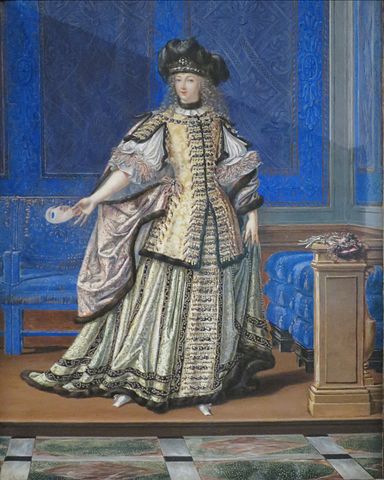
Hiding it got quite difficult anyway, because Louise, a unmarried Mademoiselle, was pregnant. She was thus removed from the household of Madame by her Royal Lover and placed in the Palais Brion, located in the garden of the Palais-Royal. The King entrusted Colbert to prepare everything for the upcoming birth. Louise gave birth to a son, Charles, on December 19 in 1663. The boy was immediately brought to be baptised at the Church de Saint-Leu and afterwards given into the care of two of Colbert’s servants. His parents being named as the Marquis de Lincourt and his wife Élisabeth de Beux. Although the King tried the best to keep the birth secret, rumours spread in Paris. As Mademoiselle de La Vallière visited Midnight-mass on the 24th of December, she was met with derision and fled the church.
Life did not get easier for Louise now she was the mother of a son fathered by Louis XIV. Certain people started to avoid her, the Queen loathed her, others mocked her for her modesty. For the latter, it was hard to understand why Louise was still so very plain. She could have it all, but was content with little to nothing. Most unbecoming for a mistress of a King as great as Louis XIV. And the whole matter with the Plaisirs de l’Île enchantée, the first garden party of Versailles, where she looked so very embarrassed again…. She almost tried to hide herself. Officially this party was celebrated in honour of the Queen and Queen Mother, but everyone knew it was actually dedicated to Louise. It was a declaration of love for her and she looked as if she wanted to run off. Most unbecoming.
Anne d’Autriche was no fan of Louise. For ages she did her very best to avoid her son’s mistress, but now she actually had to receive her, and Marie-Thérèse was beside herself again. She urged Louis to break with Louise, in vain.
And Louise was pregnant again, giving birth to another son, Philippe, on January 7 in 1665, followed by a third son, Louis, on December 27 the same year. Their first-born child Charles fell ill with influenza in July 1665 and passed away. Philippe and Louis would not live long either, both passed away in 1666. The same year in which Louise gave birth to a daughter, Marie-Anne, in secret at the Château de Vincennes.
After the death of Anne d’Autriche in 1666, Louis had no mind to hide his mistress anymore at all. Quite the scandal was caused by the fact that Mademoiselle de La Vallière was placed next to the Queen during mass, but Louis’ love for Louise was already declining…
Louise was not blind to it and asked a friend to help her. She saw that she was not able anymore to enchant and entertain her Louis as she used to, but her friend might be able to do this. To amuse him with her witty tongue during his visits… This friend was Madame de Montespan.
As Louise showed signs of pregnancy again, Louis already ogled her good friend. Just like Louise once covered for Minette, she now covered for the witty Françoise-Athénaïs de Rochechouart de Mortemart. Madame de Montespan saw her chance and took it, while publicly declaring she would never fancy to be anyone’s mistress. She befriended the King, who quickly fell in love with her. It was perhaps a farewell-present, Louise saw it as such, as Louis made her a Duchesse in 1667 and gave her the estate of Vaujours. Louis XIV also legitimised their daughter Marie-Anne, from then know as Mademoiselle de Blois, and promised to do the same with the child Louise was carrying that moment. This child was a son and received the name Louis along with the title of Comte de Vermandois.

Louise turned more and more towards religion now. Her last attempt to win the affections of her Louis back was not much of a success. She had been ordered to remain back, being pregnant with the Comte de Vermandois, as the court visited Flanders during the War of Devolution. Louise did so, but then changed her mind and raced after them. The whole thing ended in a carriage race between her and the Queen, which she won. Louis did find the matter quite amusing and for a moment it seemed like Louise had also won his heart back, but she was thus ordered to return to Paris and Madame de Montespan crawled back into the King’s bed.
The situation now got rather frustrating for Louise. She was forced to share an apartment with her former best friend, Louise having the front room and Athénaïs the adjoining one, and to witness how the King passed through her room on the way to that of Athénaïs. As if this is not bad enough already, she also had to ride in one carriage with Athénaïs and the Queen. The latter hated her and the first pretended to be friends with both, while sleeping with Louis XIV. The people even started to joke about the Three Queens of France whenever their carriage rolled past.
Athénaïs demanded Louise, a Duchesse, should help her with her toilette and Louise did so without uttering a word of displeasure. Louise was made godmother of the first child Athénaïs gave Louis and that child was named Louise…
It all got too much for Louise and after she fell sick in 1670, she started to dedicate her life to religion. Louis did not want to hear anything about it. He did not love Louise anymore, but she was still his official mistress. Louise did not yet think of withdrawing from court, but changed her lifestyle to a more pious one, thinking that watching Madame de Montespan making merry with her Louis was a way to atone for her sins. She later said, since she sinned in public, atoning for it in public by watching the man she loved with a other woman, and feeling his disdain for her, was the most painful matter to endure, but seemed appropriate to her. She did so for about a year.
On Ash-Wednesday of 1671, Louise left the court in secret to seek refuge at the convent of Sainte-Marie de Chaillot. Louis was hunting as the news reached him. This time he did not went himself to bring Louise back, but sent the Duc de Lauzun. Louise refused and the Marshall Bernardin Gigault de Bellefonds was sent. Louise refused again. The King then sent Colbert and finally Louise agreed to return after being promised a private conversation with Louis about the matter. Louis persuaded her to stay. Louise flight was the cause of plenty of gossip. Especially Madame de Sevigné suspected that Louise only ran off to gain the King’s attention.

If Louise had thought that her running off would alter the behaviour of the King and his new mistress, she was wrong. Nothing changed.
It took Louis another three years until he finally allowed Louise to go. She already had made her mind up and asked him to allow her to enter a convent, but he always refused. At the start of the Franco-Dutch War, the old mistress had to cover for the new again and the Queen still hated her. She had no say over her children and Colbert took care of their fortune. Madame de Montespan treated her like a servant.
Finally, in 1674, Louis allowed Louise to leave everything behind her. She said farewell to Versailles and entered the Carmelite convent in the Faubourg Saint-Jacques in Paris.
Before her departure, Madame Scarron, the future Madame de Maintenon, asked her if she was aware of all the discomforts that awaited her, including not being allowed to wear the shoes that allow her to walk without limping. Louise replied “When I shall be suffering at the convent, I shall only have to remember what they made me suffer here, and all the pain shall seem light to me.”
She also made peace with the Queen in the end. The day she left she threw herself at the feet of Marie-Thérèse and begged for forgiveness, which replied she had done so already and embraced Louise. Her departure was quite the show and Madame de Montespan even hosted a dinner for her.
Louise took the name of Louise de la Miséricorde and the veil out of the Queens hands in 1675. In the convent, she lived a very simple life and received occasional visits of Marie-Thérèse, the Duchesse d’Orléans, her old friend the Grand Duchess of Tuscany, and Madame de Montespan. In the eyes of her fellow nuns, Louise became the embodiment of true atonement, after she decided for a life of great deprivation and hard work, against the counsel of the Abbess.
Louise de la Miséricorde died aged sixty-five, after living thirty-six years in the convent, on June 6 in 1710.


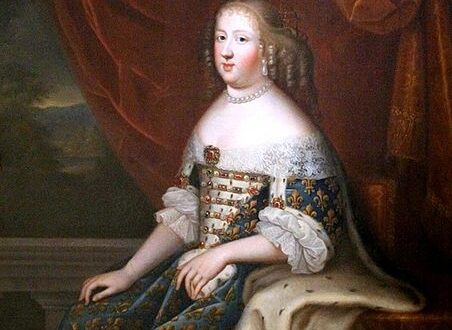
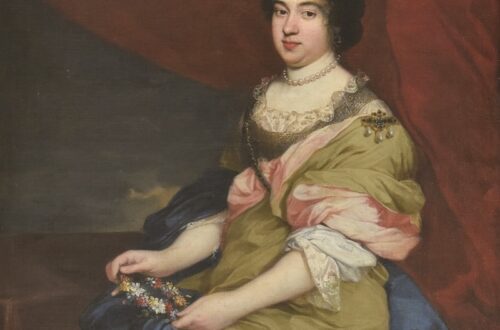
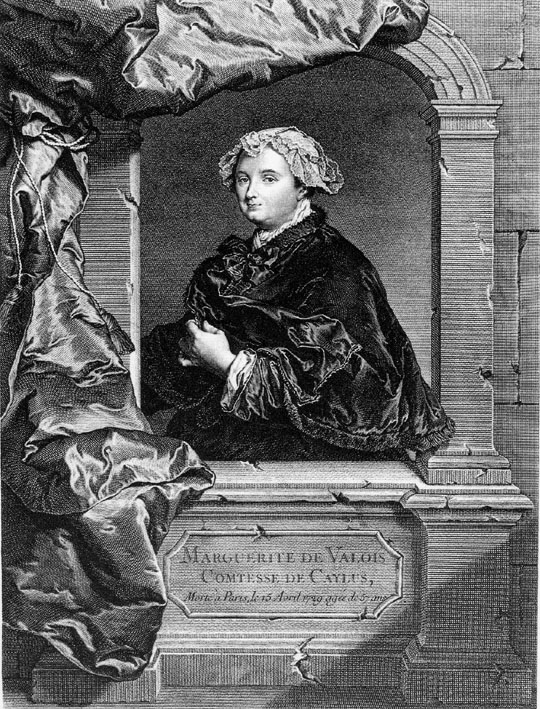
5 Comments
Katherine Wurzburg
So interesting. Your posts help me to better understand the TV show Versailles, thank you.
Susan Chapek
I’ve not seen the TV series yet, but just finished reading the Dumas version of Louise’s early romance with the King. Interesting to see how Dumas condensed and adapted the timeline when he fictionalized it. His Louise comes off as uncongenial (to me), cold-hearted to her childhood sweetheart and so quick to let a fangirl crush blaze up into a socially dangerous and (in her own view) sinful love.
Thanks for the post.
AuroraVonG
I couldn’t get myself to read that one yet, because I’m no Dumas friend. I think he twists and turns things too much to make it more scandalous and shocking for his readers back in the days.
Jacquette Louise of France.
I didn’t like her very much when i first heard about he, but know i dore her. She just fell in love and was called a whore for it. She seems tto have been sweet and innocent really. The fact that she refused to lie to her king and betray her friend is a thing i like. Also as she became friends with her enemies shows she really didn’t care much about the past quarrels.
Peder Halvorsen
Beautiful summary and comentary. I have only just started reading the history of all these amazing women and find the entire subject fascinating.